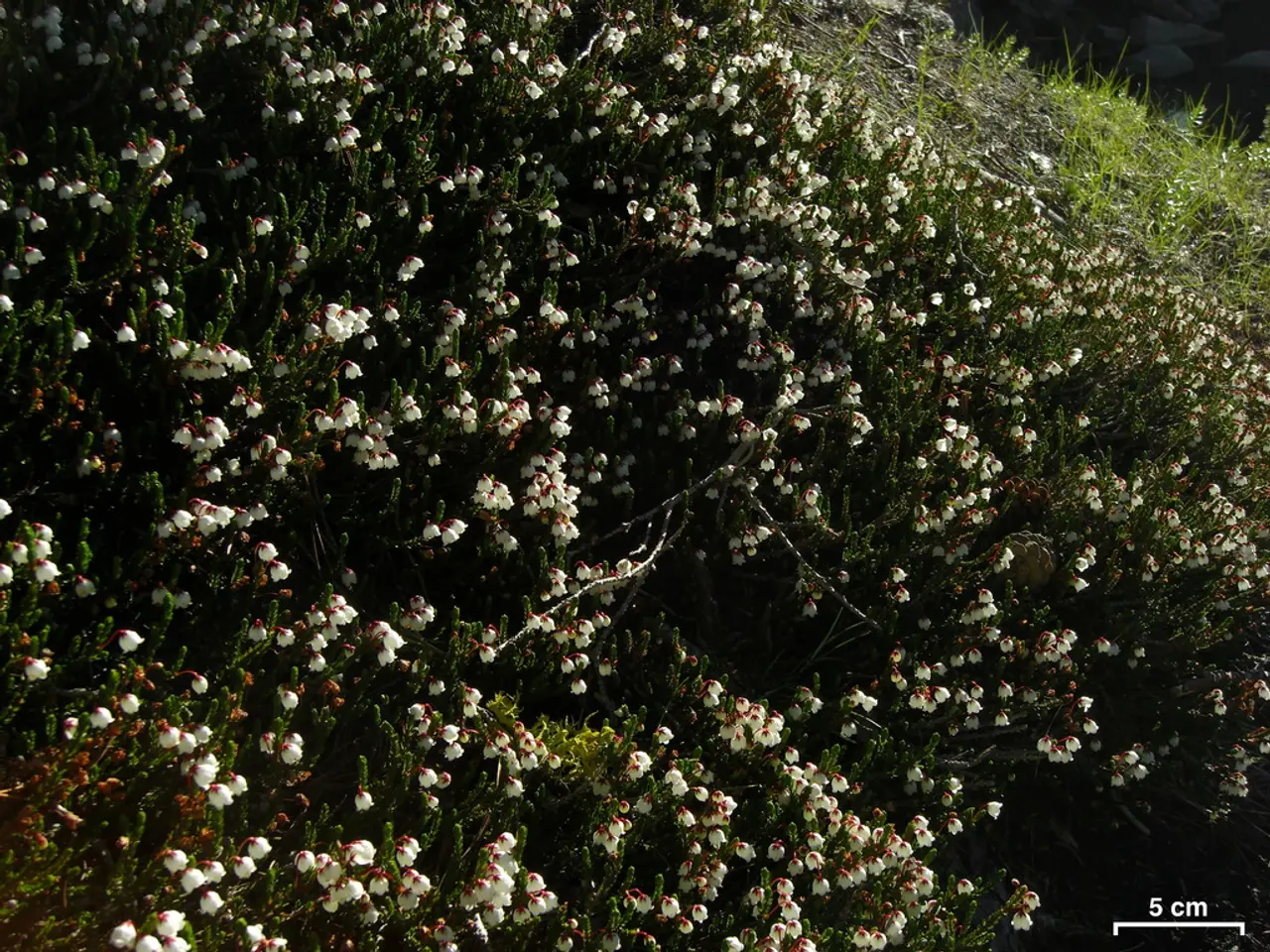Guide for Gardeners: Critical Points to Determine Soil Acidity Level
For gardeners and farmers alike, maintaining the right soil pH is crucial for a thriving garden. Soil pH, a measure of the acidity or alkalinity of soil, plays a significant role in nutrient availability and plant health.
Soil with a pH below 6.0 is considered acidic, and may require lime to raise the pH. Lime, specifically calcium carbonate, is a common amendment used to neutralize acidity in soil. It slowly raises pH by adding calcium and/or magnesium, displacing harmful aluminum ions, and improving nutrient availability.
On the other hand, alkaline soil (pH above 7.0) could need sulfur compounds to lower the pH. Sulfur is a reliable amendment for decreasing soil pH, though it requires microbes in the soil to convert it into sulfuric acid.
Raising Soil pH (Making Soil More Alkaline)
The most common and effective soil amendment to neutralize acidity is lime. Calcitic lime, which contains only calcium carbonate, is used for raising pH alone, while dolomitic lime, which also contains magnesium, is used if magnesium is also deficient in the soil. Wood ash, though sparingly used, can also raise soil pH quickly, but should be applied cautiously to avoid over-alkalizing.
Lowering Soil pH (Making Soil More Acidic)
Elemental sulfur is the most effective long-term acidifier. Soil microbes convert elemental sulfur into sulfuric acid over weeks or months, gradually lowering pH. Iron sulfate provides faster pH reduction than elemental sulfur and supplies micronutrients, but should be used carefully to avoid iron toxicity. Aluminum sulfate acts quickly to reduce pH but carries the risk of aluminum toxicity and is generally limited to ornamental or non-edible crops. Acid-forming fertilizers like ammonium sulfate, urea, and diammonium phosphate lower pH while also supplying nitrogen.
Additional Practices
Incorporating organic matter like pine bark, sawdust, compost, or peat moss can gradually buffer soil pH while improving organic content and microbial activity, often favoring soil acidification. Regular pH monitoring using handheld or in-field soil pH sensors connected to data management systems allows for real-time monitoring and adaptive adjustment of amendments without overcorrecting.
Factors to Consider
Clay soils and those rich in organic matter have a higher buffering capacity than sandy soils, meaning they resist changes in pH. Climate also plays a role in the soil acidification process, with different climates accelerating it at varying rates. In cases where pH adjustment isn't feasible, selecting plants that thrive in existing soil pH conditions is a practical approach.
Regularly testing the soil's pH is crucial for maintaining an optimal growing environment. Soil tests should be performed twice a year to catch any pH shifts early on. The ideal soil pH for most plants is between 6.0 and 7.0. In areas with acid rain, regular liming is essential to offset its effects.
In summary, raising pH (making soil more alkaline) is best done using lime or wood ash, while lowering pH (increasing soil acidity) is effectively managed via elemental sulfur and acid-forming fertilizers, with other sulfates as faster alternatives but with risks. Consistent pH monitoring and gradual amendment application are essential to maintain an optimal growing environment tailored to specific crop needs.
[1] University of California Agriculture and Natural Resources. (2021). Soil pH: What it is and how to adjust it. Retrieved from https://ucanr.edu/sites/Soils/files/312289.pdf [2] Penn State Extension. (2021). Soil pH: Why is it important and how to test it. Retrieved from https://extension.psu.edu/soil-pH-why-is-it-important-and-how-to-test-it [3] Cornell University Cooperative Extension. (2021). Soil pH: Why it's important and how to test it. Retrieved from https://nysipm.cornell.edu/resource/soil-ph-why-its-important-and-how-test-it
Incorporating lime, especially calcitic lime, is an effective way to raise the pH of home-and-garden soil, while organic matter such as pine bark, compost, or peat moss can help gradually buffer the soil and potentially acidify it.
When aiming to lower the pH of home-and-garden soil, elemental sulfur is a long-term acidifier, while iron sulfate can provide faster pH reduction but should be used with caution to avoid iron toxicity.




